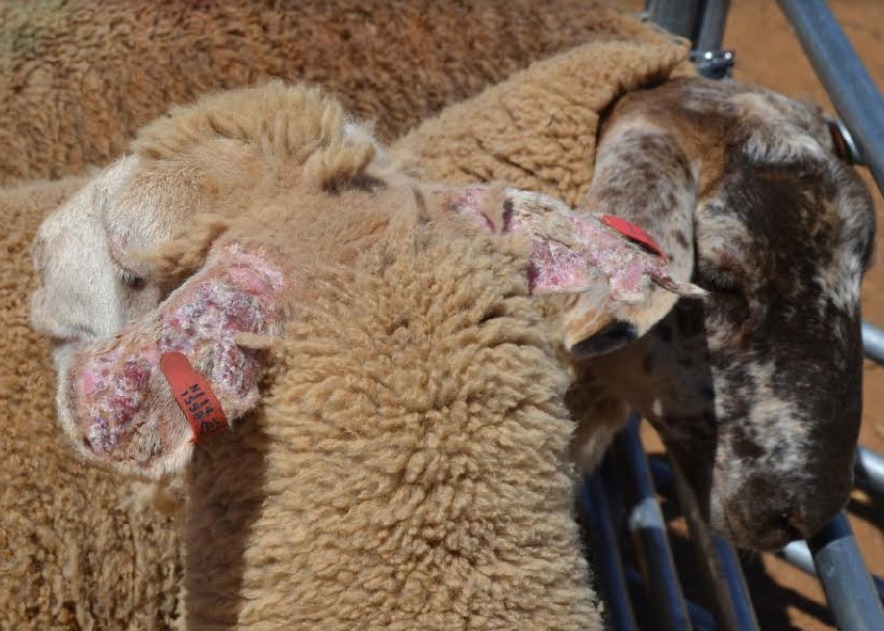
A lamb showing photosensitisation and an unaffected pigmented lamb. Photo – J. Quinn and L. Weston.
CENTRAL west New South Wales sheep producers have been warned to look out for photosensitisation in lambs grazing crops and green pasture.
Central West Local Land Services’ district veterinarians have received a number of reports of photosensitisation this season as a result
District veterinarian Dr Nik Cronin said earlier in the season in the south, producers were seeing cases on grazing canola, whereas more recently in other areas lambs grazing cereal crops and other pastures have been affected.
While green feed in central west NSW is scarce, producers in scattered areas have been lucky enough to receive adequate rainfall to allow grazing of winter crops.
Photosensitisation is where stock become abnormally sensitive to sunlight due to the presence of photodynamic agents in their skin. Animals get sunburnt on the exposed unwoolled parts of the body. Photosensitisation can be primary or secondary. In secondary cases, skin sensitivity is a result of liver disease from eating plants such as cathead and panic grasses, and there are often mortalities where liver damage is severe.
“In lambs, there is variable swelling of affected areas including ears, eyelids, lips and nose.
“The swollen ears may droop and are often a distinctive feature of the condition,” Dr Cronin said.
Primary photosensitisation is caused by the direct ingestion of plants containing photodynamic compounds. The liver is not damaged, and while mortalities are less likely, production losses from the setback can be significant.
“Episodes of primary disease tend to be sporadic, and have been associated with grazing of a range of plant species, including various grasses, cereals and legumes,” Dr Cronin said.
“Stock may become affected within days of grazing the feed of concern, or during prolonged grazing when there is a change in the plants’ growth phase.”
LLS said photosensitisation on grazing brassicas is more likely to occur when the crop is grazed early.
The recently reported cases in central west NSW have been primary photosensitisation. Management involves removing stock from the problem paddock and providing shelter from the sun, LLS said.
Mild cases of primary photosensitisation should improve in less than a week, although in cases where sunburn has been severe, recovery may be more prolonged.
For more information sheep producers are advised to call their Local Land Services district veterinarian on 1300 795 299.

HAVE YOUR SAY